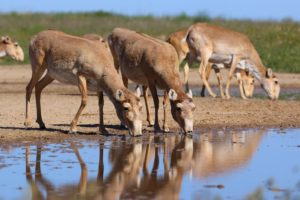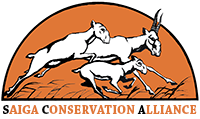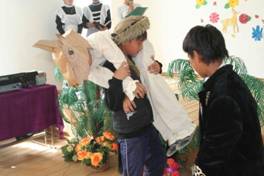Background

 |
Project structure
This project is a collaboration between the SCA and the Association for the Conservation of Biodiversity in Kazakhstan (ACBK). The SCA provides international experience and expertise, coordinates the project and liaises with the donor. ACBK provides in-country expertise and contacts and implements the project on the ground. The project is generously funded by the People’s Trust for Endangered Species and the Save Our Species (SOS) coalition. Fauna and Flora International may also provide funding support for some components of the project.


Project activities
1) We will mount an expedition of about one month, to promote public education and awareness of saigas. It would visit as wide a range of farmers, village heads, schools and community centres as possible within the affected area of the Ural region. The field team will be led by in-country partner ACBK and will liaise closely with government and parastatal organisations such as Okhotzooprom.
2) We will develop an education and awareness campaign based on ACBK’s and SCA’s existing materials. We will discuss with community leaders the possibilities for instituting a community-based participatory monitoring programme. We will identify opinion formers and potential leaders of a Saiga Friends network, who might be interested in working with saiga conservation organisations in the future.
3) We will develop a firm foundation for saiga conservation in the Ural region, based upon public engagement activities that we are successfully carrying out in other parts of the saiga’s range. This will have a particular focus on children. Activities might include instituting an annual Saiga Festival, and events with schools, such as art competitions and theatre, as well as showings of saiga videos and ecological field visits.
4) We will institute a six-month participatory monitoring programme with local farmers, based on our previous experience, but adapted to local conditions.
5) We will institute a network of “Saiga Friends”, based around key opinion-formers in the main villages of the region. We will support them through provision of materials (such as our 6-monthly newsletter Saiga News, leaflets, posters, badges, t-shirts) and through regular visits, to act as hubs for saiga-related activities and communication in their villages.
6) During the first visit, the information we collect will include quantitative information concerning people’s knowledge of wildlife laws, awareness of saiga status and of conservation activities. We will use this information as a baseline for evaluating project success, by carrying out a repeat survey at the end of the project in order to assess attitudinal and knowledge change.

